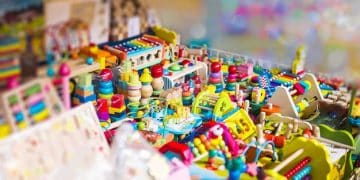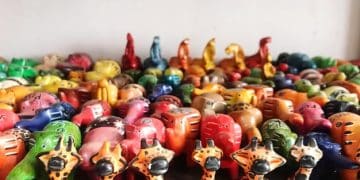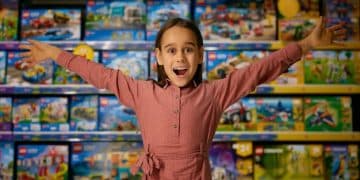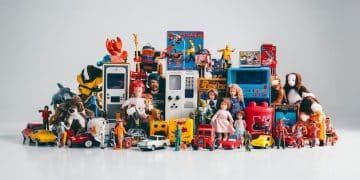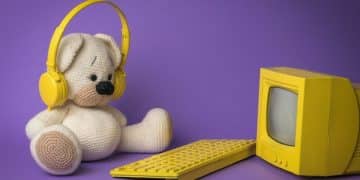Indie Toy Designers: Predicting the Next Big Toy Trends in the US
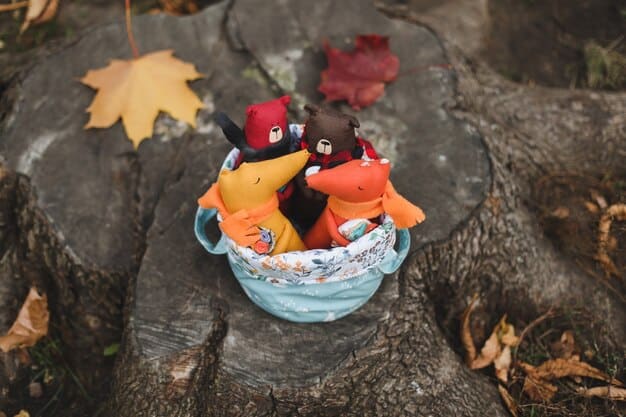
Indie toy designers are often at the forefront of innovation, offering unique, handcrafted toys that anticipate emerging trends before they hit mainstream US retail shelves, driven by niche interests and creative exploration.
Are you on the hunt for the next big thing in toys? Look no further than the vibrant world of indie toy designers. These innovative creators are often the first to tap into emerging trends, offering unique play experiences that capture the imagination and set the stage for future mainstream hits.
The Rise of Indie Toy Designers
The toy industry is no longer solely dominated by major corporations. A new wave of indie toy designers is emerging, bringing fresh perspectives and designs to the market. These creators often operate on a smaller scale, allowing them to be more agile and responsive to niche interests and emerging cultural trends.
But what exactly fuels this rise? Several factors are at play. Let’s delve deeper.
Accessibility and Technology
The internet and advancements in manufacturing technology have democratized the toy design process. Designers now have access to online marketplaces, crowdfunding platforms, and affordable prototyping tools, empowering them to bring their visions to life without relying on traditional industry gatekeepers.
Consumer Demand for Uniqueness
Today’s consumers, particularly parents and collectors, are increasingly seeking out unique and personalized products. They are drawn to the authenticity and craftsmanship that indie toy designers offer, valuing the story behind the creation as much as the toy itself.
- Focus on Sustainability and Ethical Production
- Emphasis on Educational and Developmental Play
- Creation of Toys That Reflect Diverse Cultures and Identities
Indie toy designers are not just creating toys; they are fostering communities, promoting creativity, and challenging the status quo of the toy industry. Recognizing the importance of supporting designers to maintain innovation within the toy industry.
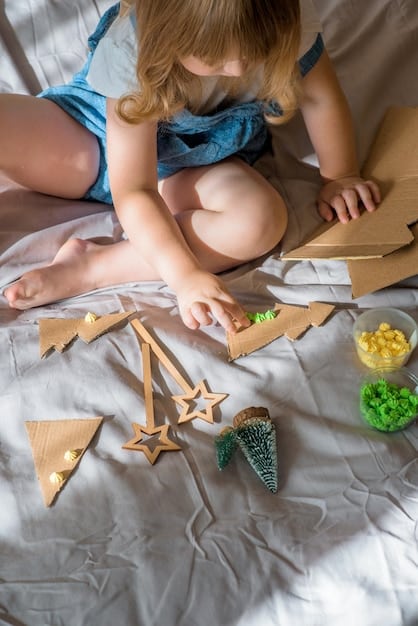
Spotting Trends: What to Look For
Identifying the next hot trend requires a keen eye and an understanding of cultural shifts. Indie toy designers often serve as barometers of these changes, translating them into tangible playthings. But what specific indicators should you be paying attention to?
Here’s a breakdown.
Niche Interests and Fandoms
Indie toy designers are adept at catering to niche interests and fandoms that may be overlooked by larger companies. Keep an eye on emerging trends in gaming, anime, comics, and other subcultures, as these often translate into popular toy concepts.
Educational and STEM-Based Toys
The demand for toys that promote learning and development continues to grow. Look for indie designers who are incorporating STEM (science, technology, engineering, and mathematics) principles into their creations, offering children engaging ways to explore these subjects.
- Sustainable materials and eco-friendly practices
- Toys celebrating diversity and inclusivity
- Products that promote mindfulness and emotional intelligence
Staying ahead of the curve involves not just observing trends but also understanding the values and aspirations that drive them. A combination of market research, cultural awareness, and a good dose of intuition can help you identify the indie toy designers who are poised to shape the future of play.
Where to Discover Indie Toy Designers
Finding these hidden gems requires a bit of exploration. Luckily, there are numerous platforms and events dedicated to showcasing the work of indie toy designers. You’ll have to search through some of the lesser-known sites online.
Here are some avenues to explore.
Online Marketplaces
Etsy, Shopify, and other online marketplaces are home to a thriving community of indie toy designers. These platforms offer a wide selection of unique and handcrafted toys, often with direct interaction between the designer and the customer.
Toy Conventions and Trade Shows
Smaller, more specialized toy conventions and trade shows often feature indie designers who may not be present at the larger, mainstream events. Look for events focused on art toys, designer toys, or handcrafted goods.
Here are a few places to start your search:
- Explore online communities and social media groups
- Attend craft fairs and maker markets in your area
- Follow toy blogs and industry publications that showcase indie designers
By actively seeking out these creators, you can discover toys that are not only unique and engaging but also reflect the passion and dedication of the individuals behind them.
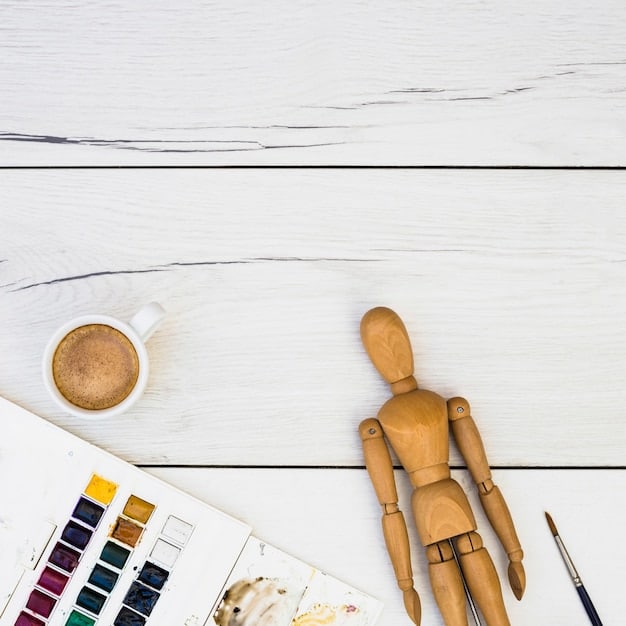
The Business of Indie Toys
For those interested in selling the work of these designers, understanding the business side is essential. Indie toy designers often face unique challenges in terms of production, marketing, and distribution. However, their agility and direct connection with customers can also provide a competitive edge.
Let’s break down selling indie toys.
Sourcing and Partnerships
Building strong relationships with indie toy designers is crucial. Look for creators whose values align with your own, and who are committed to quality, ethical production, and fair pricing. Negotiate reasonable wholesale terms that allow you to offer competitive retail prices while supporting the designer’s business.
Marketing and Promotion
Highlight the unique story and craftsmanship behind each toy. Emphasize the designer’s background, inspiration, and production process. Utilize high-quality photography and videography to showcase the toys’ design and functionality.
- Leverage social media and influencer marketing
- Collaborate with other indie businesses
- Host events and workshops
Successfully marketing indie toys requires a personalized approach that resonates with consumers who appreciate authenticity, creativity, and meaningful connections with the products they purchase. With this, you’re off to a great start in selling.
How Indie Toys are Shaping the Future of Play
The influence of indie toy designers extends far beyond niche markets. They are actively shaping the future of play by introducing new concepts, materials, and values to the toy industry.
It’s time to explore the impact they are having on the industry.
Promoting Sustainability and Ethical Practices
Many indie toy designers are committed to using sustainable materials, ethical production methods, and environmentally friendly packaging. This focus on sustainability is influencing larger companies to adopt more responsible practices.
Fostering Inclusivity and Representation
Indie toy designers are often at the forefront of creating toys that reflect diverse cultures, identities, and abilities. This commitment to inclusivity is helping to broaden children’s understanding of the world and promote empathy.
- Inspiring creativity and imagination
- Challenging traditional gender roles
- Encouraging intergenerational play
By championing these values, indie toy designers are not only creating great toys but also contributing to a more positive and inclusive future for children.
The Enduring Appeal of Handcrafted Toys
In a world increasingly dominated by mass-produced goods, the appeal of handcrafted toys remains strong. Indie toy designers offer a refreshing alternative to the standardized products found in mainstream retail stores.
Here are the appeals of handcrafted toys.
Quality and Durability
Handcrafted toys are often made with high-quality materials and meticulous attention to detail, ensuring that they can withstand years of play. The enduring quality of these toys makes them cherished heirlooms that can be passed down through generations.
Uniqueness and Individuality
Each handcrafted toy possesses its own unique character and imperfections, reflecting the artistry and skill of the designer. This individuality makes these toys feel more special and personal than mass-produced items.
- Supporting local economies and artisans
- Connecting with the maker
- Investing in timeless, meaningful play
By embracing handcrafted toys, consumers can support independent creators, promote sustainability, and provide children with play experiences that are both enriching and memorable.
| Key Point | Brief Description |
|---|---|
| 🌱 Sustainability | Eco-friendly materials and ethical production. |
| 🎨 Uniqueness | Handcrafted, original designs reflecting artistry. |
| 💡 Innovation | Early adoption of niche interests and trends. |
| 🤝 Community | Direct connection with designers and shared values. |
FAQ
▼
Indie toy designers stand out due to their emphasis on handcrafted quality, ethical production practices, and the ability to quickly adapt to emerging trends. They often cater to niche interests overlooked by larger companies.
▼
You can discover indie toy designers on online marketplaces like Etsy and Shopify, at specialized toy conventions and trade shows, and through online communities and social media groups dedicated to handcrafted goods.
▼
Many indie toy designers prioritize sustainability by using eco-friendly materials, implementing ethical production methods, and minimizing waste in packaging. Their commitment inspires more responsible practices in the broader toy industry.
▼
Handcrafted toys offer a unique appeal through their quality, durability, and individuality. Each toy reflects the artistry of its creator, providing a personal touch. They also ensure long-lasting play experiences and meaningful connections.
▼
Indie toy designers profoundly influence the future of play by promoting inclusivity, fostering creativity, and challenging traditional norms. They also encourage sustainability and ethical practices, shaping future values.
Conclusion
Indie toy designers are the unsung heroes of the toy industry, pushing boundaries with creativity, sustainability, and a deep understanding of emerging trends. By supporting these independent creators, you’re not just buying a toy, you’re investing in a more innovative, ethical, and engaging future for play.
